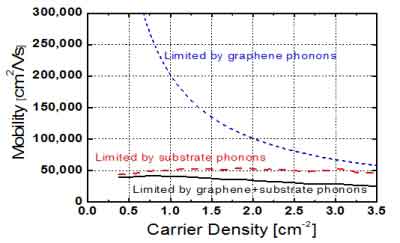Silicon Wafer Carrier Mobility
Carrier mobility is a critical parameter for semiconductor devices. It governs the speed at which electrons can move through the material, and affects everything from device performance to power consumption.
Problem: Unfortunately, carrier mobility is difficult to optimize and often limited by the doping level of silicon. This makes it hard to create faster, more efficient semiconductor devices.
Solution: Silicon carrier mobility can be improved with the right technology. Our silicon carrier mobility enhancement technology effectively tackles both of these limitations, resulting in a significant increase in electron mobility.
Get Your Quote FAST! Or, Buy Online and Start Researching Today!
How Does Doping Affect Silicon Carrier Mobility?
In a recent study, Singh and co-workers measured the mobility of silicon carriers in monolayer and few-layer Sb systems. In the monolayer system, carriers had less than 100 cm2 V-1 s-1 mobility. Inferences were drawn that the differences are due to different flavors of DFT. Nevertheless, the authors concluded that a monolayer system would have less than one hundred cm2 V-1 s-1 mobility.
Doping in semiconductors has a profound impact on carrier mobility. The doping level of silicon affects  carrier mobility in several ways. For example, a low doping level limits the mobility of a semiconductor by collisions with lattice symmetry and ionized impurities. Meanwhile, a high doping level leads to a greater scattering. Both of these effects contribute to the overall reduction of carrier mobility.
carrier mobility in several ways. For example, a low doping level limits the mobility of a semiconductor by collisions with lattice symmetry and ionized impurities. Meanwhile, a high doping level leads to a greater scattering. Both of these effects contribute to the overall reduction of carrier mobility.
The degree of scattering by ionized impurities, or surface charge, reduces the mobility of silicon carriers. A thicker silicon layer causes carriers to travel farther and suffer from additional scattering due to phonon and surface-roughness effects. A thin silicon layer has a higher mobility than
a thick one. Regardless of the layer thickness, a higher inversion-charge concentration will reduce mobility. However, a thin-film silicon material will have increased mobility.
The mobility of a semiconductor depends on the amount of inversion charge and the thickness of the silicon layer. In general, the higher the charge center concentration, the higher the carrier mobility. As a result, the higher the doping level, the lower the mobility. In the thin-layer case, the increased inversion-charge will increase the mobility. In the thin-layer case however, the mobility will be low. A reduced thickness will decrease the mobility of a semiconductor.
The density of impurities in the silicon layer influences the mobility of a semiconductor. As a result, inversion-charge increases, while hole mobility decreases. As a result, the density of inversion-charge increases, so does the mobility of the semiconductor. As a consequence, higher-than-average-doped silicon is a better semiconductor. It is also possible to use high-density crystalline silicon to improve its performance.
Increasing temperature increases the mobility of silicon. This is due to the increased density of ionized impurities. This also limits the mobility of electrons. Hence, a semiconductor has more electrons than holes. This means that it is more difficult for an electron to move through the semiconductor at the higher temperatures. The density of the carriers reduces the mobility of the carriers. A semiconductor is a better conductor of light than a copper or aluminum.
As a semiconductor, silicon has poor mobility compared to other materials, such as III-V semiconductors. Because it has small bandgap, its mobility is low, which affects device-level FOMs. It is also difficult to form highly-resistive silicon substrates. In addition, this means that a semiconductor suffers from poor isolation and high loss in mm-wave applications. But despite these disadvantages, a transistor's sensitivity is not affected by the electric field, but a large-scale magnetic field.
Video: Carrier Mobility Explained